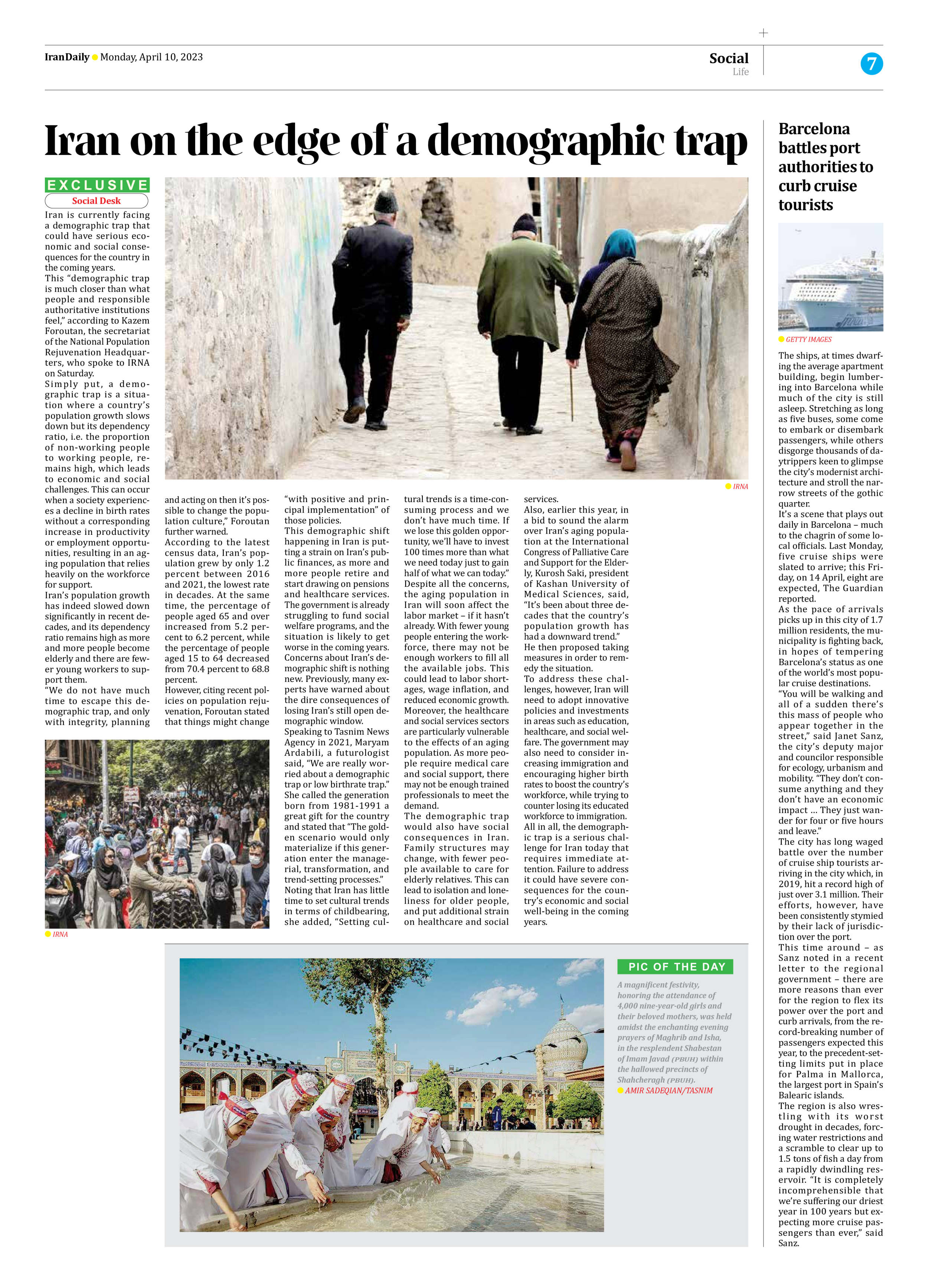
Iran on the edge of a demographic trap
Iran is currently facing a demographic trap that could have serious economic and social consequences for the country in the coming years.
This “demographic trap is much closer than what people and responsible authoritative institutions feel,” according to Kazem Foroutan, the secretariat of the National Population Rejuvenation Headquarters, who spoke to IRNA on Saturday.
Simply put, a demographic trap is a situation where a country’s population growth slows down but its dependency ratio, i.e. the proportion of non-working people to working people, remains high, which leads to economic and social challenges. This can occur when a society experiences a decline in birth rates without a corresponding increase in productivity or employment opportunities, resulting in an aging population that relies heavily on the workforce for support.
Iran’s population growth has indeed slowed down significantly in recent decades, and its dependency ratio remains high as more and more people become elderly and there are fewer young workers to support them.
“We do not have much time to escape this demographic trap, and only with integrity, planning and acting on then it’s possible to change the population culture,” Foroutan further warned.
According to the latest census data, Iran’s population grew by only 1.2 percent between 2016 and 2021, the lowest rate in decades. At the same time, the percentage of people aged 65 and over increased from 5.2 percent to 6.2 percent, while the percentage of people aged 15 to 64 decreased from 70.4 percent to 68.8 percent.
However, citing recent policies on population rejuvenation, Foroutan stated that things might change “with positive and principal implementation” of those policies.
This demographic shift happening in Iran is putting a strain on Iran’s public finances, as more and more people retire and start drawing on pensions and healthcare services. The government is already struggling to fund social welfare programs, and the situation is likely to get worse in the coming years.
Concerns about Iran’s demographic shift is nothing new. Previously, many experts have warned about the dire consequences of losing Iran’s still open demographic window.
Speaking to Tasnim News Agency in 2021, Maryam Ardabili, a futurologist said, “We are really worried about a demographic trap or low birthrate trap.”
She called the generation born from 1981-1991 a great gift for the country and stated that “The golden scenario would only materialize if this generation enter the managerial, transformation, and trend-setting processes.”
Noting that Iran has little time to set cultural trends in terms of childbearing, she added, “Setting cultural trends is a time-consuming process and we don’t have much time. If we lose this golden opportunity, we’ll have to invest 100 times more than what we need today just to gain half of what we can today.”
Despite all the concerns, the aging population in Iran will soon affect the labor market – if it hasn’t already. With fewer young people entering the workforce, there may not be enough workers to fill all the available jobs. This could lead to labor shortages, wage inflation, and reduced economic growth.
Moreover, the healthcare and social services sectors are particularly vulnerable to the effects of an aging population. As more people require medical care and social support, there may not be enough trained professionals to meet the demand.
The demographic trap would also have social consequences in Iran. Family structures may change, with fewer people available to care for elderly relatives. This can lead to isolation and loneliness for older people, and put additional strain on healthcare and social services.
Also, earlier this year, in a bid to sound the alarm over Iran’s aging population at the International Congress of Palliative Care and Support for the Elderly, Kurosh Saki, president of Kashan University of Medical Sciences, said, “It’s been about three decades that the country’s population growth has had a downward trend.”
He then proposed taking measures in order to remedy the situation.
To address these challenges, however, Iran will need to adopt innovative policies and investments in areas such as education, healthcare, and social welfare. The government may also need to consider increasing immigration and encouraging higher birth rates to boost the country’s workforce, while trying to counter losing its educated workforce to immigration.
All in all, the demographic trap is a serious challenge for Iran today that requires immediate attention. Failure to address it could have severe consequences for the country’s economic and social well-being in the coming years.







